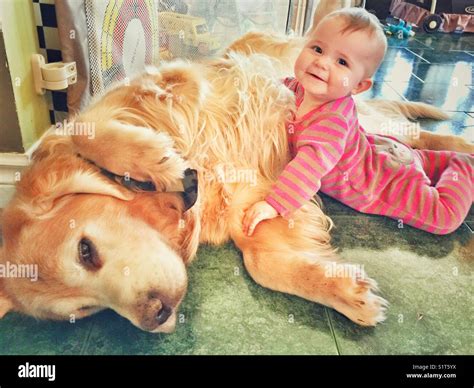
Do you recall the satisfying thwack of a floppy disk sliding into a computer drive? Or perhaps the frustration of untangling a cassette tape with a pencil? A nostalgic trip down memory lane, fueled by 32 images, is currently making the rounds online, prompting viewers to confront the realization that they might, indeed, be “of a certain age.” The viral collection features relics from the past, triggering waves of recognition and a healthy dose of existential contemplation among those who remember a pre-digital world.
The slideshow, compiled by Yahoo! Lifestyle, serves as a visual time capsule, showcasing items and trends that were once ubiquitous but are now largely obsolete. The featured images range from iconic technology to popular fashion trends and even fast-food promotions, painting a vivid picture of the recent past. The collection is not just about nostalgia; it’s a reflection on how rapidly technology and culture evolve, marking the passage of time in a way that resonates with anyone who has witnessed these changes firsthand.
“Hate to Break It to You, But If You Recognize Literally These 32 Things, You’re Officially…Of a Certain Age!” the original article declares, and the response suggests they hit a nerve. The images selected are designed to evoke a sense of familiarity and shared experience, creating a collective moment of recognition among viewers who grew up during specific eras.
The items highlighted include classic video game consoles like the Atari, the original Nintendo Entertainment System (NES), and the Super Nintendo Entertainment System (SNES). These gaming systems, with their distinctive blocky graphics and simple gameplay, represent a pivotal era in the development of the gaming industry. Many viewers remember spending countless hours playing games like Super Mario Bros., The Legend of Zelda, and Pac-Man, forging memories that are now intertwined with their sense of nostalgia.
Music technology also features prominently, with images of cassette tapes, Walkmans, and CD players. These devices were essential for music lovers before the advent of digital streaming, and the act of creating mixtapes or carefully handling CDs was a ritualistic part of the listening experience. The image of a pencil being used to rewind a cassette tape is particularly evocative, capturing a common frustration of the era.
The slideshow also includes images of now-defunct stores and brands, such as Blockbuster Video and Toys “R” Us. These businesses were once cultural landmarks, providing entertainment and retail experiences that are now largely unavailable. The closure of these stores represents a significant shift in the consumer landscape, as digital platforms and online retailers have replaced many traditional brick-and-mortar businesses.
Fashion trends from the past are also well-represented, with images of scrunchies, acid-wash jeans, and neon clothing. These trends, which were once considered cutting-edge, now appear dated and even comical. However, they also evoke a sense of nostalgia for a time when fashion was more playful and less self-conscious.
Food and beverage items also make an appearance, with images of Crystal Pepsi, Surge soda, and Dunkaroos. These products were popular during specific periods and have since disappeared from store shelves, becoming cult favorites among those who remember them fondly. The nostalgia for these discontinued items highlights the power of food and beverage brands to create emotional connections with consumers.
The impact of these images goes beyond mere nostalgia. They also serve as a reminder of how much the world has changed in a relatively short period. Technology has advanced at an unprecedented rate, transforming the way we communicate, consume media, and interact with the world around us. The items featured in the slideshow represent a tangible link to a past that is rapidly fading from memory, prompting viewers to reflect on their own experiences and the changes they have witnessed.
The “of a certain age” phenomenon is not just about recognizing specific items or trends. It’s about sharing a collective experience with others who grew up during the same era. It’s about remembering the feeling of excitement when unwrapping a new video game, the frustration of waiting for a dial-up internet connection, or the joy of discovering a new song on the radio. These shared experiences create a sense of community and belonging, reminding us that we are not alone in our memories.
The article’s popularity speaks to the universality of nostalgia and the power of shared experiences. It’s a reminder that even as the world continues to change, the memories of our past remain a vital part of our identity. It’s an invitation to embrace our age and celebrate the experiences that have shaped who we are today.
Here are some specific examples of the items featured in the slideshow and their cultural significance:
-
Floppy Disks: These were the primary means of storing and transferring data before the advent of USB drives and cloud storage. The image of a floppy disk evokes memories of saving documents, installing software, and sharing files with friends.
-
Cassette Tapes: These were the dominant format for recorded music before CDs and digital downloads. The image of a cassette tape evokes memories of creating mixtapes, listening to music on a Walkman, and rewinding tapes with a pencil.
-
Atari: This was one of the first successful home video game consoles, introducing many people to the world of video games. The image of an Atari console evokes memories of playing classic games like Pac-Man, Space Invaders, and Asteroids.
-
Blockbuster Video: This was the largest video rental chain in the world, providing access to movies and games before the rise of streaming services. The image of a Blockbuster store evokes memories of browsing the aisles, renting movies for the weekend, and returning them on time to avoid late fees.
-
Dial-Up Internet: This was the primary means of accessing the internet before broadband connections became widely available. The sound of a dial-up modem connecting to the internet is a distinctive auditory memory for many people.
-
Scrunchies: These were a popular hair accessory in the 1980s and 1990s. The image of a scrunchie evokes memories of fashion trends and hairstyles from that era.
-
Trapper Keepers: These were popular organizational tools for students. The image of a Trapper Keeper evokes memories of school supplies and the start of a new school year.
-
Tamagotchis: These were electronic virtual pets that required constant care and attention. The image of a Tamagotchi evokes memories of the early days of digital pets and the responsibility of caring for them.
The slideshow’s success also highlights the increasing trend of nostalgia marketing, where brands and media outlets tap into consumers’ fond memories of the past to create emotional connections and drive engagement. By featuring items and trends from specific eras, these campaigns can evoke a sense of familiarity and belonging, making consumers more receptive to their messages.
In conclusion, the viral slideshow of 32 images serves as a potent reminder of the passage of time and the shared experiences that define specific generations. It’s a celebration of nostalgia, a reflection on technological advancements, and a testament to the power of shared memories. The article’s popularity underscores the universal appeal of looking back and reminiscing about the good old days, even as we continue to navigate the ever-changing landscape of the modern world.
Expanded Content and In-Depth Analysis:
Delving deeper into the phenomenon sparked by the “32 Images That Prove You’re Officially…Of a Certain Age!” article, it’s crucial to understand the psychological and sociological factors that contribute to the potent appeal of nostalgia. Nostalgia, often dismissed as mere sentimentality, is a complex emotion that serves several important functions.
The Psychology of Nostalgia:
Research suggests that nostalgia is not just about longing for the past; it’s a multifaceted emotion that can enhance psychological well-being. According to Dr. Constantine Sedikides, a professor of social and personality psychology at the University of Southampton and a leading researcher on nostalgia, “Nostalgia makes us feel good. It makes us feel loved. It makes us feel that life has meaning.”
Nostalgia serves as a buffer against negative emotions, such as loneliness, anxiety, and existential dread. By recalling positive memories from the past, individuals can reaffirm their sense of self-continuity and find comfort in the familiar. This is particularly relevant in times of stress or uncertainty, when the past can provide a sense of stability and predictability.
The images featured in the slideshow tap into these psychological benefits by evoking specific memories and associations. Seeing a picture of a childhood toy, for example, can trigger a cascade of positive emotions, reminding viewers of happy moments and strengthening their sense of identity.
The Sociological Significance of Shared Nostalgia:
Beyond individual psychological benefits, nostalgia also plays a significant role in shaping social connections and reinforcing group identity. Shared nostalgic experiences create a sense of community and belonging, as individuals bond over their common memories and cultural references.
The “32 Images” article exemplifies this phenomenon by featuring items and trends that were widely popular during specific eras. By recognizing these items, viewers feel a sense of connection to others who grew up during the same time period. This shared recognition fosters a sense of camaraderie and strengthens social bonds.
Moreover, nostalgic experiences can help bridge generational gaps by providing a common ground for communication and understanding. Older generations can share their memories and experiences with younger generations, fostering a sense of continuity and cultural heritage.
The Role of Technology in Shaping Nostalgia:
Technology plays a crucial role in shaping and amplifying nostalgic experiences. The internet and social media platforms have made it easier than ever to access and share nostalgic content. Websites like YouTube, Reddit, and Facebook are filled with videos, images, and discussions that evoke memories of the past.
The “32 Images” article is a prime example of how technology can facilitate nostalgic experiences on a large scale. By sharing the slideshow online, the article’s creators were able to reach a vast audience of individuals who could relate to the featured items and trends. The comments and discussions that followed the article’s publication further amplified the nostalgic experience, as viewers shared their own memories and personal anecdotes.
Nostalgia Marketing and Consumer Behavior:
The appeal of nostalgia has not gone unnoticed by marketers, who increasingly use nostalgic themes and imagery to promote their products and services. Nostalgia marketing is a strategy that aims to evoke positive emotions and associations by referencing familiar brands, characters, and cultural trends from the past.
This strategy can be particularly effective in reaching older consumers who have fond memories of specific brands or products. By tapping into these memories, marketers can create emotional connections and foster brand loyalty.
The “32 Images” article indirectly highlights the effectiveness of nostalgia marketing by showcasing items and trends that are now considered iconic. Many of these items are still actively marketed and sold today, often with a nostalgic twist. For example, classic video game consoles like the Atari and Nintendo are still available in retro versions, appealing to consumers who want to relive their childhood memories.
The Dark Side of Nostalgia:
While nostalgia generally has positive effects, it can also have negative consequences if it becomes excessive or unrealistic. Pathological nostalgia, also known as “nostalgia neurosis,” is a condition characterized by an overwhelming longing for the past and a rejection of the present.
Individuals with pathological nostalgia may become fixated on past events, neglecting their current responsibilities and relationships. They may also idealize the past, ignoring its negative aspects and creating a distorted view of reality.
It’s important to maintain a balanced perspective on nostalgia, recognizing its benefits while also acknowledging its potential pitfalls. Nostalgia should be used as a source of inspiration and comfort, not as an escape from the present.
FAQ:
1. Why do people feel nostalgic?
Nostalgia is a complex emotion that serves several psychological functions. It helps to boost positive mood, foster social connectedness, maintain a sense of self-continuity, and provide comfort during times of stress or uncertainty. Recalling positive memories from the past can reaffirm our identity and make us feel more grounded. According to research, nostalgia can buffer against negative emotions and make us feel loved and that life has meaning.
2. What are some common triggers for nostalgia?
Nostalgia can be triggered by a variety of stimuli, including sensory cues (such as smells, sounds, and tastes), visual cues (such as photographs and familiar objects), and social cues (such as conversations and shared experiences). Specific items and trends from our past, like those featured in the “32 Images” article, can also trigger nostalgic feelings by evoking specific memories and associations. Even particular times of the year or holidays can spark feelings of nostalgia.
3. Is nostalgia always a positive emotion?
While nostalgia generally has positive effects on mood and well-being, it can also have negative consequences if it becomes excessive or unrealistic. Pathological nostalgia, also known as “nostalgia neurosis,” is characterized by an overwhelming longing for the past and a rejection of the present. Individuals with pathological nostalgia may become fixated on past events, neglecting their current responsibilities and relationships. It’s important to maintain a balanced perspective on nostalgia and avoid idealizing the past.
4. How has technology influenced nostalgia?
Technology has significantly influenced nostalgia by making it easier than ever to access and share nostalgic content. The internet and social media platforms have created vast archives of historical information and images, allowing us to easily revisit the past. Online communities and forums also provide opportunities to connect with others who share our nostalgic interests and experiences. Furthermore, technology allows companies to tap into nostalgia through marketing campaigns that reference familiar brands, characters, and cultural trends from the past.
5. How does nostalgia impact consumer behavior?
Nostalgia marketing is a strategy that aims to evoke positive emotions and associations by referencing familiar brands, characters, and cultural trends from the past. This strategy can be particularly effective in reaching older consumers who have fond memories of specific brands or products. By tapping into these memories, marketers can create emotional connections and foster brand loyalty. Products that evoke a sense of nostalgia often experience increased sales and popularity, demonstrating the power of nostalgia to influence consumer behavior.
Conclusion:
The “32 Images That Prove You’re Officially…Of a Certain Age!” article is more than just a collection of nostalgic images; it’s a reflection of how our experiences shape our identities and how shared memories connect us to others. It underscores the pervasive power of nostalgia in our lives and its influence on our emotions, social connections, and even consumer behavior. Recognizing and understanding this power allows us to appreciate the complexity and importance of nostalgia in shaping our individual and collective experiences.









